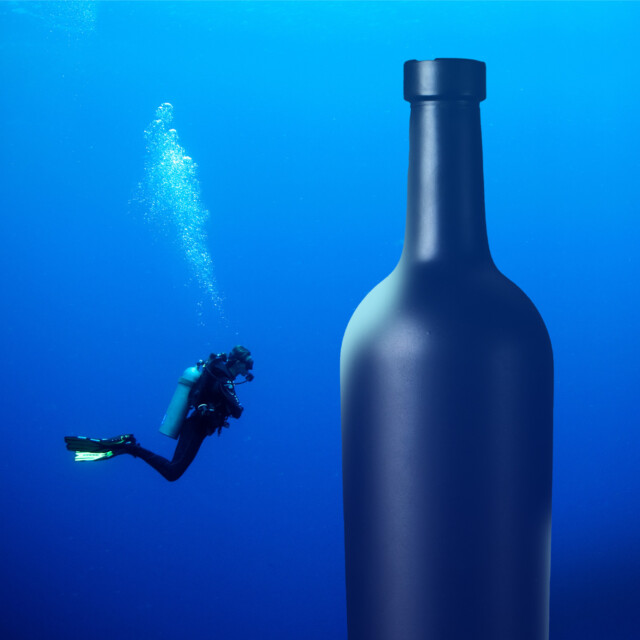Earlier this summer, the wine industry took its eyes off vineyards to witness a storm brewing out at sea: Ocean Fathoms, a Santa Barbara-based wine company known for aging bottles in the Pacific Ocean, had 2,000 bottles of its wines confiscated and destroyed by the Santa Barbara District Attorney’s office. Its two founders, in alignment with their plea deal following charges alleging investor fraud and operating without the licensing and permits necessary to submerge the bottles, were required to pay $50,000 in restitution.
Ocean Fathoms, though, is far from the only company to cash in on ocean aging. This practice of aging bottles underwater in marine environments around the world has picked up speed over the last decade — and the resulting wines aren’t cheap. The bottles submerged by Ocean Fathoms were retailing for around $500 post-submersion, while the same wine sourced from its producers sold for less than $150. The company also held comparative tastings that booked for upwards of $1,000.
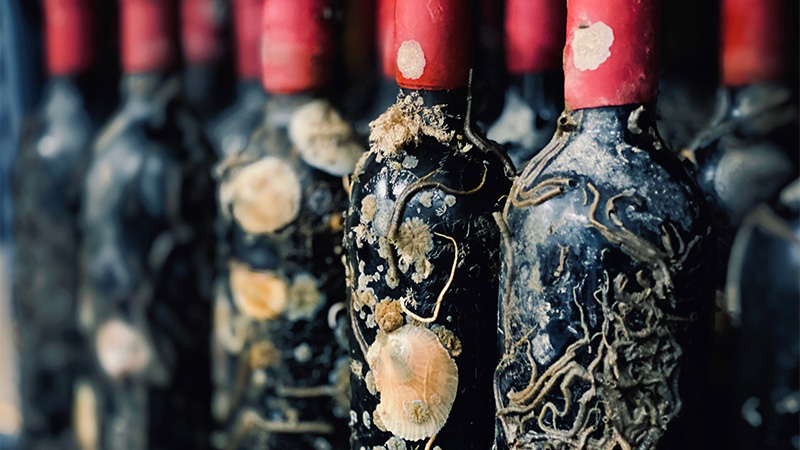
For those trying to make the case of sea aging, it’s all about harnessing the consistent temperature, pressure, and turning of the bottles happening beneath the waves to preserve and age superior wine. And with a near or complete absence of light at deep levels, on paper, the ocean appears to be the ultimate nature-made wine cellar. Even if this reasoning was sound — more on that later — the bottles are still at the mercy of mother nature, meaning they could break, blow, or simply taste no different than bottles aged on land, making it a challenging task to justify those massive price hikes. And while the vast majority of the companies employing the experimental technique do have express permission from the necessary government agencies to operate in their respective bodies of water, how strong is the case for dunking Champagne into the depths at all?
From Shipwrecks to Sinking Rosé
While the trend of ocean aging is catching on, the concept’s roots can be found on the ocean floor inside shipwrecks, many of which went down in the 20th century. When these ships are located by divers decades after they sailed the seas, they’re sometimes found with crates of wine aboard. When tasted, many of the well-preserved bottles have been discovered to have aged near-perfectly. With low median temperatures, decreased or total obscured visibility, and no oxygen, these deep-sea conditions were the ideal inspiration for 21st-century producers to experiment with variable aging experiences. The logic behind these experiments argues that these conditions — along with the depths’ higher pressure and the constant undulation the ever-changing tides bring — have the ability to preserve the freshness of wine bottles’ contents, producing aged wines with more robust fruit notes and less aggressive acidity compared to those aged on land.
Producers that have taken the plunge have included Gaia Wines in Santorini where bottles of “Thalassitis” were dipped into the Mediterranean; Louis Roederer, which dropped bottles of Champagne into the Bay of Mont Saint-Michel in Normandy; and Bodega Crusoe Treasure in Plentzia, Spain, along with Ocean Fathoms and France’s Maison Veuve Clicquot.
But the ocean remains an extreme environment that’s home to several protected species, making the orchestration of these aging methods incredibly complex and demanding of proper approval. These complexities — ranging from the requirement of boats and divers to the risk of breakage and leaks to the conservation of marine life — are what inspired the team at Crusoe Treasure winery to organize the 1st International Congress of Underwater Enology in 2019. Held in Bilbao and Plentzia, Spain, the convention was aimed at publicizing the winemaking practice while promoting the importance of marine sustainability.
“The hope is that people are responsible with the environments that they’re working in,” Anna Riera, a marine biologist who works with Crusoe Treasure, told The Guardian in 2021. “If all of a sudden everyone started projects like this, not with small spaces but with large underwater factories, this type of production would lose all meaning.”
Beyond cultivating responsibility, researchers from multiple programs across the globe are now digging deeper to investigate the science of ocean aging. One of those programs is Veuve Clicquot’s Cellar in the Sea program, which conducts ongoing oenological studies to determine what conditions — if any — are present in oceanic domains that alter the contents of bottles beyond how they would change with age on land. Based on the first nine years of results from the 40-year study, the sea does have an impact on how wines age when compared to land-aged wines, but those changes take far longer to take effect than some brands may be willing to freely admit.
This lack of responsibility Riera speaks of was the exact downfall of Ocean Fathoms. Not only were Ocean Fathoms’ founders discovered to be operating without state or federal permits — which would have been needed from a minimum of eight government agencies — but they were discovered to have been misleading investors into believing that they were operating legally. Beyond the questionable nature of Ocean Fathom’s business practices, there’s also the issue of whether or not a single year — the amount of time the company’s wines spent beneath the sea before being sold — can actually alter wines to such a degree that would validate the hefty price tag or be discernible to the palate. Based on the findings from the Cellar in the Sea program, the answer to that question is likely no.
Under Pressure
Veuve Clicquot’s program was conceived shortly after the 2010 discovery of a shipwreck off the coast of the Åland Islands, an archipelago located between Finland and Sweden. 168 bottles of Champagne were discovered onboard, each of which had been stranded to age in the Baltic depths. When the bottles were brought to the surface by diver Christian Ekström and his team, they contacted sommelier Ella Grüssner Cromwell-Morgan to sample the bottles. They discovered that the wine was somehow still luscious and sweet, and shortly after the recovery, it was revealed that 47 of the bottles aboard the ship had been produced by Maison Veuve Clicquot — with some of the bottles having been blended by Madame Clicquot herself.
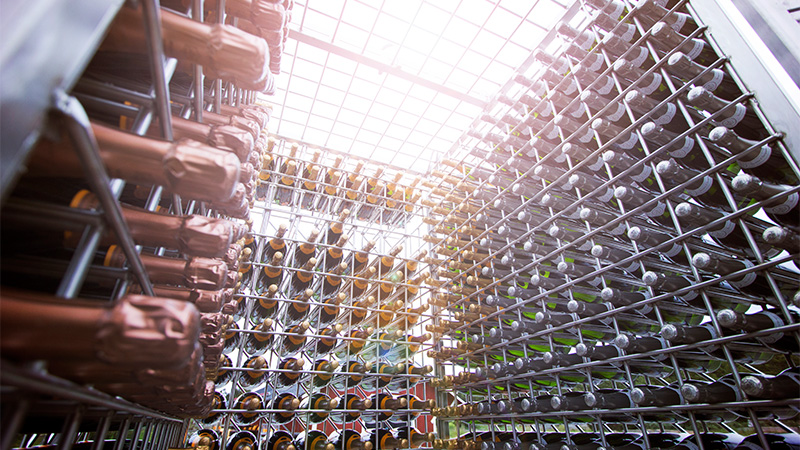
After Grüssner Cromwell-Morgan contacted the Maison, Veuve Clicquot launched its Cellar in the Sea experience in 2014 in conjunction with the Åland Island officials, as well as Ekström and Grüssner Cromwell-Morgan, to pay homage to these once lost Champagnes. The experiment, currently in its ninth year and set to last another 30, compares numerous bottles of four expressions aging in two locations: those aging in underground chalk cellars known as crayères in Reims in France, and those that have been sent to the bottom of the Baltic Sea in a storage site called the Åland Vault, designed specifically to recreate the conditions of those bottles found at the wreck years earlier. Both storage facilities sit roughly 40 meters below sea level, where the crayères maintains a temperature of 12 degrees Celsius (about 54 degrees Fahrenheit) and the Baltic Sea keeps a year-round temperature of just 4 degrees Celsius (39 degrees Fahrenheit.) Differing oxygen rates, undulation, light obscurity, and equal pressure are other factors accounted for in the study. Every two to four years, bottles are pulled up from the sites and tasted by the Veuve Clicquot oenological team before samples of each expression are sent to the Institut de la Vigne et du Vin in Bordeaux for further analysis.
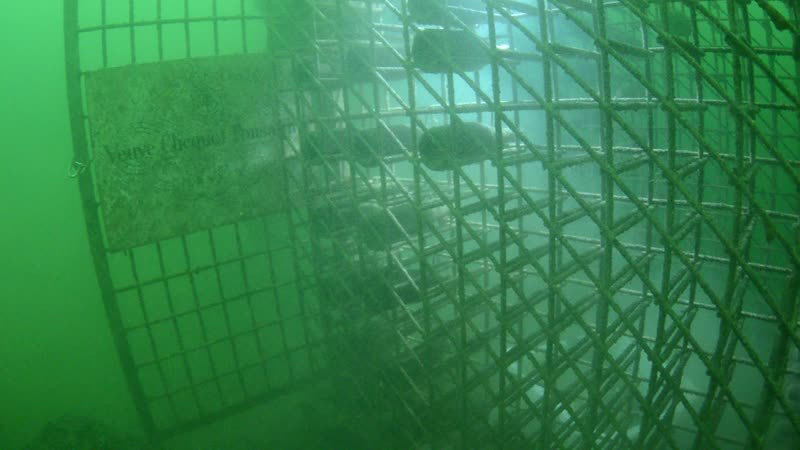
According to the brand, this year’s June 2023 tasting revealed a noticeable difference between the two Yellow Label expressions put to the test. While bottles of 750 milliliter Yellow Label aged in the crayères were found to have potentially reached their aging plateau nine years in, those aged in the Baltic remained lively, permeated by seductive fruit notes and white flowers. In the same expression in magnum size, the Baltic Sea was found to have preserved the freshness of the wines even more, whereas crayères-aged magnums have started leaning toward reduction. The preservation of freshness, energy, and tension was also found to be somewhat more present in the experiment’s Baltic-aged Demi-Sec when compared to its land-aged twin. When it came to the study’s 2004 Rosé vintage, the team found the impacts of the Baltic to be less pronounced, leading to the hypothesis that red wines have a protective effect on the outcome of aging.
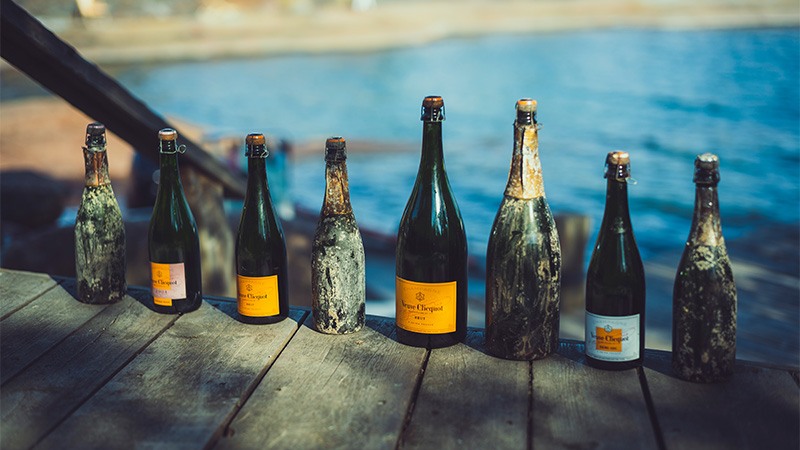
The analysis from the Institut de la Vigne et du Vin was found to be in line with the oenological findings. In 2017, the last time bottles were pulled before this year due to the pandemic preventing travel, the Baltic Sea-aged wines were seemingly evolving more slowly. But the 2023 analysis confirms that the two cuvées aged in the Baltic and those aged in the crayères have started to converge, and now follow the same developmental trends. According to Veuve, there will be much more to learn about the wines’ behaviors over the next 30 or so years.
“While we have garnered quite interesting insight and results to date, we have much to learn about the art of underwater aging,” says Gaelle Goossens, Veuve Clicquot’s winemaker. That said, don’t expect to find any of these bottles on the market. While a bottle from the original 2010 discovery of the shipwreck fetched over $43,000 at auction, Veuve Clicquot currently has no intention of selling these wines currently undergoing the aging process in the Baltic’s icy waters.
Only Time Will Tell
While we may not yet know enough about ocean aging and its ability to transform wines — or preserve those otherwise lost to time — we could be well on our way to figuring it out. But in order for these seascaped wines to avoid falling into the same gimmicky territory of other trendy aging methods, they need to be produced with more than profits in mind. And, perhaps most importantly, they need to be produced — and sold — with full approval from the state and national governments. If not, wine brands run the risk of looking like nothing more than an easy cash grab. It should also be noted that these wines should only be consumed once they have been deemed safe by the appropriate government regulators, like the U.S. Food and Drug Administration, which can confirm that no ocean water has entered the bottles before they hit the market.
The ocean is a mysterious environment, rife with opportunity to explore — and now, sipping a glass of Champagne technically qualifies as research.
